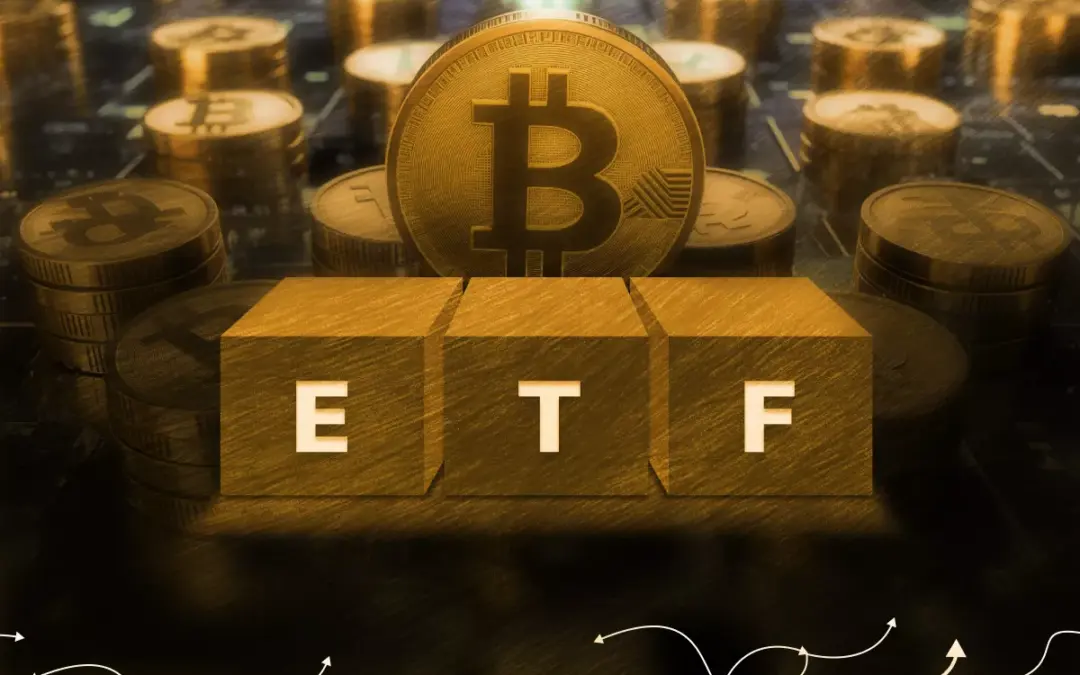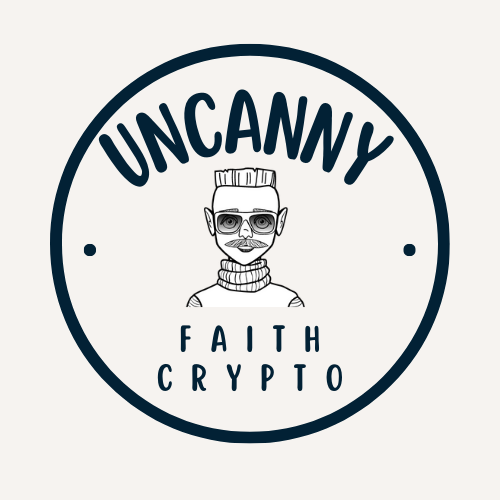
by uncannyfaith | Jan 6, 2025 | Cryptocurrency news and updates
Chile Considers Establishing a National Bitcoin Reserve
In a significant move reflecting the growing global interest in Bitcoin as a strategic financial tool, Chile is actively discussing the establishment of a national Bitcoin reserve. This innovative idea has gained traction among certain politicians but has faced resistance from the Central Bank of Chile due to concerns about the digital currency’s volatility and associated risks.
The proposal, spearheaded by lobbyist Andrés Villagrán, has received international support from prominent U.S. entrepreneurs such as Dennis Porter and Simon Collins. Should Chile implement this initiative, it could position the country as a forward-thinking leader in the adoption of cryptocurrency at a national level. However, concerns regarding price swings and regulatory uncertainty remain critical challenges in integrating Bitcoin into national reserves.
Victims of Bitcoin Fraud in Germany
The rise in Bitcoin’s popularity has unfortunately been accompanied by an increase in cryptocurrency-related scams. A heartbreaking case from Germany highlights this danger, where a couple from Hennef lost approximately 75,000 euros to fraudulent cryptocurrency schemes.
The scammers initially lured the victims with promises of high returns on small Bitcoin investments. Once trust was established, they pressured the couple to invest larger amounts. This tragic case underscores the need for heightened financial literacy and consumer protection in the cryptocurrency space. Individuals are urged to exercise extreme caution and consult experts before making investments in digital currencies.
Switzerland: Paving the Way for Bitcoin Integration
Switzerland has taken a bold step towards integrating Bitcoin into its national financial strategy. A private initiative led by Swiss internet pioneer Yves Bennaïm has called on the Swiss National Bank (SNB) to allocate a portion of its reserves into Bitcoin investments.
This proposal aims to position Switzerland as a global fintech leader while reaping potential financial benefits. However, critics argue that Bitcoin’s price volatility could pose risks to long-term stability. Despite these concerns, Switzerland continues to enhance its reputation as a pioneer in cryptocurrency adoption, fostering innovation in the rapidly evolving financial technology industry.
The Rise of NextGen Digital Platforms
The cryptocurrency and tech sectors have witnessed some remarkable developments, including the meteoric rise of companies like NextGen Digital Platforms. In just 45 days, the value of its shares surged by an astounding 1,300%. Much of this growth is attributed to the company’s focus on cloud computing and adoption of popular cryptocurrencies such as Solana and Dogecoin.
While such gains capture attention, they also highlight the speculative nature of the market. Investors are encouraged to approach such opportunities cautiously and conduct thorough research to assess long-term potential and risks inherent in such rapid growth.
Bitcoin Crosses $100K Mark Amid Growing Market Speculation
Bitcoin has once again surpassed the highly anticipated $100,000 mark, sparking excitement among investors. While this milestone represents the growing adoption and value of the digital currency, its vulnerability to external political factors remains a significant concern.
Market experts note that the cryptocurrency is heavily influenced by global regulations and political developments. For example, under the leadership of Donald Trump in the U.S., discussions surrounding less restrictive regulatory frameworks have previously impacted Bitcoin’s price. For Bitcoin to achieve long-term stability, global financial institutions will need to collaborate on consistent and transparent regulatory policies.
Bitcoin’s Role in Global Finance
As countries and institutions increasingly view cryptocurrencies as viable components of national financial strategies, Bitcoin has emerged as a focal point of debate. Supporters argue that integrating Bitcoin into government reserves could provide competitive advantages in the global fintech arena.
However, challenges such as high price volatility, security risks, and lack of regulation remain formidable obstacles. Consumer protection measures, financial education, and sound regulatory frameworks are essential to ensure the effective adoption and integration of cryptocurrencies in both private investments and national financial systems.
Overall, Chile’s consideration of a Bitcoin reserve is part of a broader trend reflecting the increasing incorporation of digital currencies into national economies. While Bitcoin offers tremendous opportunities, its risks highlight the importance of prudence and strategic planning in navigating the cryptocurrency landscape.
Conclusion:
Bitcoin continues to reshape global financial strategies, gaining attention for its potential as a reserve asset and investment tool. However, balancing its adoption with mitigating risks remains crucial. To thrive in this dynamic market, governments, businesses, and individuals must remain informed and cautious, embracing innovation while navigating uncertainties.
Keywords: Bitcoin reserve, cryptocurrency fraud, Swiss cryptocurrency initiative, Bitcoin adoption, digital currency regulations, cryptocurrency risks, financial strategies, blockchain technology

by uncannyfaith | Jan 5, 2025 | Cryptocurrency news and updates
Investing in Bitcoin: A Smart Financial Future for Your Child
Every parent wants to provide their child with the best possible start in life, and part of that journey involves setting up a solid financial foundation. One compelling way to do this is through investing in Bitcoin, a growing digital asset that has proven its long-term potential.
Even small monthly contributions can go a long way toward building a thriving financial future for your child. Bitcoin, known for its decentralized nature and limited supply, offers significant growth opportunities over time. By starting early, parents can take advantage of Bitcoin’s compounding potential and position their child for a prosperous future.
Preparing for the future isn’t just about saving money for immediate needs—it’s about ensuring your child is financially equipped to navigate adulthood with confidence. Consider diversifying your investment strategy and exploring Bitcoin as a forward-thinking option for long-term growth.
Secure your child’s financial future today with smart planning and investments designed to grow and thrive over time. Wouldn’t it be great to give your child a head start that continues to flourish?
This rewritten content enhances readability, removes references to specific websites, and is optimized to be user-friendly and SEO-friendly.

by uncannyfaith | Jan 4, 2025 | Cryptocurrency news and updates
MicroStrategy: Leading Bitcoin Adoption with Ambitious Goals
MicroStrategy, already the largest Bitcoin holder among publicly traded companies, is doubling down on its commitment to cryptocurrency. Currently, the company owns more than 145,000 bitcoins, valued at approximately $27 billion. Despite this massive position, MicroStrategy has its eyes set on acquiring even more Bitcoin, with plans to raise an additional $2 billion.
Aiming for $2 Billion in Capital for Expansion
Back in October, MicroStrategy unveiled its ambitious plan to secure $42 billion to support its Bitcoin acquisition strategy. The plan involves raising $21 billion through share sales and another $21 billion through fixed-income securities. So far, the company has successfully raised $13.35 billion, achieving over half of its target.
In January, MicroStrategy announced its intention to raise an additional $2 billion by offering perpetual preferred stock. According to the company, the proceeds will be used to further its strategic business objectives, particularly in acquiring more Bitcoin.
However, the offering will remain subject to market conditions, and the company may opt to delay or cancel the plan if financial circumstances turn unfavorable.
MicroStrategy: The Largest Bitcoin Holder
Since 2020, MicroStrategy has adopted Bitcoin as its primary reserve asset. As of now, the company owns approximately 446,400 bitcoins, which were purchased for a combined total of $27.9 billion at an average price of $62,428 per Bitcoin.
Beyond accumulating Bitcoin, MicroStrategy has also worked to strengthen the broader cryptocurrency ecosystem. Last November, the company launched a $100 million fund dedicated to supporting Bitcoin-related projects and innovations.
CEO Michael Saylor’s Ambitions Extend Beyond Bitcoin Holdings
Michael Saylor, co-founder and chairman of MicroStrategy, has positioned himself as a leading advocate for Bitcoin. Recently, Saylor expressed plans to launch a physical Bitcoin ETF, a goal the company had previously pursued in 2021 without success.
MicroStrategy’s bold moves demonstrate its unwavering commitment to Bitcoin as both an investment and a foundational element of its business strategy. As it continues to raise capital and deepen its involvement in the Bitcoin ecosystem, MicroStrategy remains a pioneering force in the adoption of cryptocurrencies.
Key Takeaways:
- MicroStrategy is the largest holder of Bitcoin among publicly traded companies, with over 145,000 BTC.
- The company has already raised $13.35 billion in its efforts to buy more Bitcoin and now plans to secure an additional $2 billion.
- Beyond Bitcoin holdings, MicroStrategy invests heavily in the cryptocurrency ecosystem, with initiatives like a $100 million Bitcoin fund.
- CEO Michael Saylor is actively pushing to introduce a physical Bitcoin ETF, further solidifying the company’s role in cryptocurrency adoption.
This continues to position MicroStrategy as a trailblazer in the digital asset space, with its sights firmly set on expanding its influence and contributions to the evolving world of cryptocurrency.

by uncannyfaith | Jan 4, 2025 | Cryptocurrency news and updates
Argentina’s Ramiro Marra Discusses Bitcoin and Monetary Freedom
In a recent podcast appearance, Ramiro Marra, a key advisor to Javier Milei in Argentina’s government, shared his unconventional perspective on the role of Bitcoin in the hands of the people. He challenged the notion of the State imposing the use of any particular currency, advocating instead for monetary freedom. Marra’s remarks highlighted his belief in a competitive currency system, where citizens can freely choose their preferred medium of exchange, whether it be Bitcoin, the Dollar, Peso, Euro, or any other currency.
The Case for Currency Competition in Argentina
According to Marra, Argentina already has a system that allows exchange rate competition. This means residents can conduct transactions in the currency of their choice. He argued that state-imposed currencies infringe upon individual freedoms and result in higher losses for the population due to limited choices.
Marra stated that state intervention is unnecessary when it comes to choosing an official currency. “Here in Argentina, I believe there’s no need for an official currency because the State determines it. But which one do people truly want? We promote a system of monetary competition,” he explained.
Bitcoin’s Role in a Free Economy
During his interview on a podcast hosted by Adrián Sáenz, Marra elaborated on his anti-state views concerning Bitcoin. He stated that governments should refrain from imposing definitions on Bitcoin, emphasizing that people should have the liberty to use it freely—whether as a currency or financial asset.
“I don’t want to label it as a financial asset. Everyone should treat it however they wish. People should choose to use Bitcoin, Argentine Pesos, Dollars, or Euros. The important thing is freedom. When someone imposes something on you, they take away your freedom. We encourage a competitive currency system,” Marra noted.
He further highlighted how technology has made it easier for individuals to use Bitcoin in transactions. “If I want to shop at a supermarket and pay with Bitcoin, I should be able to do so. Similarly, vendors should have the freedom to decide which currency they accept in exchange,” Marra said.
A Longstanding Bitcoin Advocate
This isn’t the first time Marra has come out in support of Bitcoin. As far back as October 2024, when Bitcoin reached historic price levels, he publicly championed the digital currency as a symbol of financial independence.
In a statement on social media, Marra emphasized, “Bitcoin is more than a price; it’s freedom. It doesn’t depend on governments or fuel political excesses. Bitcoin belongs to the people, without intermediaries. Economic independence lies in the hands of individuals.”
Bitcoin as a Symbol of Freedom
Marra’s narrative aligns Bitcoin with the concept of self-ownership and independence, advocating for a world free from government-dictated currencies. He believes that the rise of Bitcoin represents a revolution of personal liberty, especially in countries where state-controlled currencies are plagued by inflation and mismanagement.
Marra’s staunch defense of Bitcoin as a tool of freedom speaks to a broader global conversation about the future of money. His vision offers an alternative for those who wish to escape the constraints of centralized monetary systems and explore the possibilities of decentralized finance.
By allowing individuals to choose how they trade and what currencies they use, Marra envisions an economic system fueled by innovation, technology, and personal choice, where freedom, not state control, drives progress.

by uncannyfaith | Jan 4, 2025 | Cryptocurrency news and updates
**Bitcoin Spot ETFs Witness Record Inflows as Price Hits $98,000**
On January 3, 2025, Bitcoin spot ETFs witnessed a record-breaking daily inflow of $908 million, marking the highest amount since late November 2024. This surge signals renewed interest from institutional investors after the typical holiday slowdown.
The **Fidelity FBTC fund** led with $357 million, followed by **BlackRock’s IBIT**, which attracted $253 million. **ARKB by ARK Invest and 21Shares** secured $222 million, while **BITB from Bitwise** accumulated $61 million. Smaller contributions came from **Grayscale’s BTC fund ($8.7 million)** and **VanEck’s HODL ($5.5 million)**.
For the week following Christmas, net inflows for spot Bitcoin ETFs amounted to $244 million.
## **Bitcoin Price Growth and Market Sentiment**
On the night of January 3-4, Bitcoin’s price surged to $98,000, marking a 2% gain in a single day. This positive momentum reignited optimism among traders, with some expecting further gains in the coming days.
However, not all analysts shared the bullish sentiment. A prominent trader under the pseudonym **Scient** stated that without surpassing $99,000 and finding strong support, a price correction might be imminent. He predicted a potential drop to the $88,000–$90,000 range in January.
**Crypto Tony**, another investor, supported this outlook, suggesting a brief “relieve wave” potentially followed by a dip near $90,000. Meanwhile, **Daan Crypto Trades** tempered expectations, highlighting that the first full week of 2025 would provide clearer insights into short-term trends.
## **Institutional Activity and Market Indicators**
The recent inflow shift suggests that institutional investors are regaining confidence after the year-end sell-off. BlackRock’s $253 million purchase, coupled with significant contributions across multiple ETFs, indicates “big money” returning to Bitcoin markets.
Despite this optimism, not all signals point to overwhelming institutional demand. Analysts observed that **Coinbase’s premium recently dropped to a 12-month low (0.237)**. This, according to experts, reflects cautious behavior among U.S. investors and restrained institutional appetite at current levels.
—
These developments signify that Bitcoin’s trajectory remains a closely contested issue among traders and analysts. While some foresee further growth, others remain cautious about the sustainability of recent gains. As the year progresses, institutional activity and other key metrics will likely dictate price movements.
**Stay tuned for more updates on Bitcoin and digital asset markets.**





